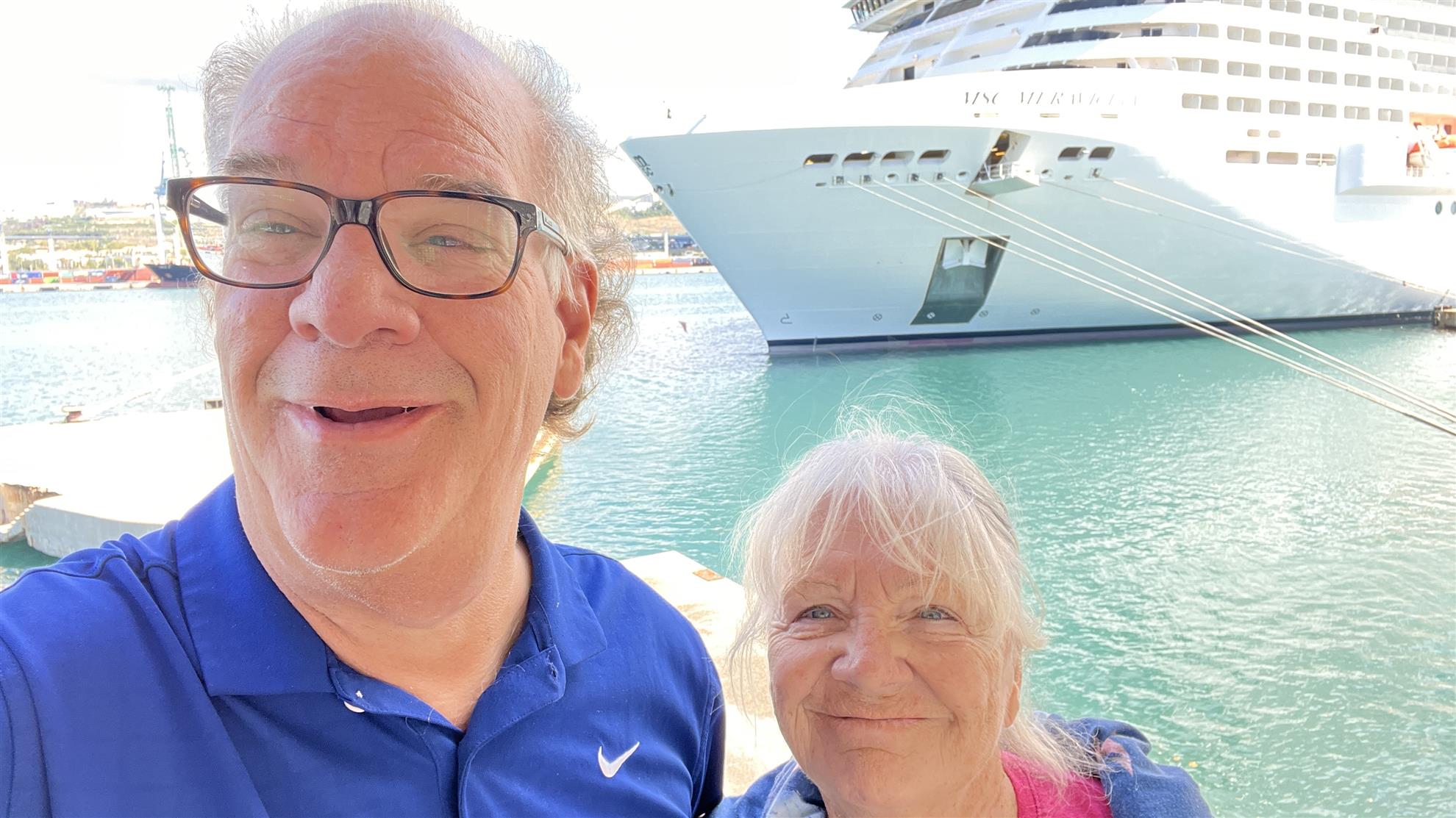 My wife and I are nomads. We sold our house, cars, and most of our personal belongings, and we live our lives traveling and seeing the world. Eventually we will settle in either one place or do a rotation of a few select places, but for now, we move every 2-4 weeks. We are not on vacation! We live our lives while traveling the world. This requires a different mindset; we need to maintain an annual budget and not spend lavishly, as one may while on a vacation. We created a sustainable budget and we stick to it. This allows us to fulfill our desire to travel wherever we choose.
My wife and I are nomads. We sold our house, cars, and most of our personal belongings, and we live our lives traveling and seeing the world. Eventually we will settle in either one place or do a rotation of a few select places, but for now, we move every 2-4 weeks. We are not on vacation! We live our lives while traveling the world. This requires a different mindset; we need to maintain an annual budget and not spend lavishly, as one may while on a vacation. We created a sustainable budget and we stick to it. This allows us to fulfill our desire to travel wherever we choose.
We live in 1 or 2 bedroom furnished apartments with a kitchen, a washer, free WiFi, and a view of the ocean, or the mountains or the old city center; the view changes whenever we want.
We use various methods of transportation. Since we sold our cars, we are no longer burdened with the cost or responsibility of maintaining said cars, so we are free to take trains, planes or rental cars to reach our next destination. We have used ferries, bicycles, water taxis, regular taxis, ride shares, buses, and of course our own two feet. But this is the first time we have used a cruise ship for transportation.
And it won’t be the last time.
We wanted to transfer from Europe to North America. The most expedient way was to fly. Flying is quick, but certainly not easy, and chock full of stress and worries. Between missed connections, to Covid-19 related restrictions, to the opportunity to lose our baggage, to just waiting in airports, flying is not fun. And there is virtually nothing to see when we fly. In our lifestyle, time is not an issue.
Being on board a ship, there is the ocean views and various ports of call we can explore and/or rediscover. It is certainly slower, but as nomads, our ongoing expenses are places to stay, transportation, food and entertainment. Plus tourist activities. Again, time is not a consideration for us. The ship itself satisfies our transportation needs as we move from one continent to another, there is a never-ending supply of food, and there is entertainment, all built into the cost of the cruise. In the ports of call, we have the opportunity to be tourists and satisfy the craving to see new places.
As a means of transportation, cruise ships are ideal. It is definitely a slower mode of travel, yet the journey is often more interesting than the destination. But isn’t cruising expensive? Yes and no.
Generally speaking, cruise ships are an expensive commitment, typically used as a vacation destination. cruise ships attract the clientele who want to travel in comfort and luxury, both of which cost money; often a great deal of money. Going on a cruise ship is a way to pamper yourself. Some cruise ships even provide your own personal butler while on board. There are spas and fitness centers, amusement parks, water slides, overhead rope obstacle courses, theaters, a casino, excursions, promenades, shopping malls, bars and restaurants all onboard. Lots of bars and restaurants. And most people who travel on cruise ships do so for the luxury and to visit places they normally never would. That accounts for about 99% of cruisers.
Nomads are most definitely in the 1% of travelers. Nomads are no longer satisfied living in one place and striking out on two-week adventures. Nomads yearn to live a lifestyle composed of travel and exploration. We can’t really explore much when we stay at home 50 weeks out of the year, so we choose to nomad. We are also cost conscious. Maintaining a budget is extremely important as it is very easy to go overboard (pun intended) on travel spending; especially on board a cruise ship.
Nomads search for ways to legally and morally hack the travel industry. How can we modify the existing resources to our advantage? Using credit card mileage reward points, loyalty clubs, travel price alerts and dynamic pricing all can be used to our advantage. Off season travel, early bird dining, matinee performances, and travel passes help us to live the life of our dreams while living within our means. Being nomads allows us the time to be flexible in our travel and entertainment planning.
But how can we use expensive cruise ships to expedite our travel while maintaining our budget? There is a special kind of cruise known as a Repositioning Cruise. Let me explain:
Cruise ships operate where tourists want to travel. They thrive on having a ship full of passengers to get the most value out of their operations, their employees and their resources. Cruise ships with thousands of passengers on board make for profitable enterprises.
But not many tourists want to cruise, or travel in general, during winter months, except where winter is warm and gentle. For example: In the Mediterranean, there are hundreds of cruise ships operating during the spring, summer and autumn months. But in winter months, it is difficult to get bookings, so many cruise ships would be dormant. It is cost prohibitive for any company to have a multi-billion dollar cruise ship sit empty in a port somewhere. The ship is designed to be on the move with a full compliment of passengers. So, how does the cruise company solve this problem? They move the ship to a place where passengers DO want to travel. During the winter months people love to go to the Caribbean. So the ship transfers from the Mediterranean to the Caribbean.
But the ship still has to buy fuel and water and food for its employees and crew. All the food and supplies are still there. The entertainment services are there. Why not have passengers on board as well? But who wants to travel across the ocean for several days with no, or very few, ports of call? There are certainly some seasoned travelers who appreciate the comforts of the ship and are not interested in going ashore. And there are passengers whose primary concern is transferring from one continent to another. Such as Nomads.
As nomads, we can utilize a repositioning cruise to transfer from Europe to North America. Or from North America to Asia, Australia or South America. Or just back to Europe in the springtime. It is an absolute fact that there are fewer passengers onboard a reposition cruise. What happens in every industry when the supply outweighs the demand? The price of the product drops, that’s what.
The cruise ship that has only 1/4 to 1/3 of the usual number of passengers will drop the price of the cruise to attract more passengers. The cruise ship’s costs are mostly fixed; the more passengers they can attract, the higher their profits are. In the case of repositioning cruises, the losses will be lower if they can attract more passengers. So, the prices are lowered for repositioning cruises. Significantly.
Case in point: We recently used a 19-day MSC repositioning cruise to transfer from Marseilles, France to Orlando, Florida. Normally a 7-day cruise would set us back $5-10,000 total. But this MSC cruise had a bargain basement price of $499 per person for the entire 19 days. That comes to slightly less than $1000 for the two of us. Of course there are other expenses to add in.
Getting to the cruise ship is the first expense. We had to get ourselves to Marseille, France. As nomads, that didn’t incur any different expenses, we merely had to point ourselves in that direction.
We determined that we didn’t want to stay in an inside cabin (the bargain basement offering), so we upgraded to a balcony suite for $1500 per person, so that brought us to $3,000. Then there are other expenses to be factored in. Since I am still working, it was important to have an internet connection. so I purchased the onboard internet accessibility. That cost is $245 for one device. Ugh!!! Onboard the cruise ship, the download speed is equivalent to dial up. Well, not quite that bad. But it is still slow and unreliable, particularly in the middle of the Atlantic Ocean. Dear Elon Musk, Fix this!
There are some entertainment events and specialty restaurants for which MSC charges a premium. We chose not to indulge in those options.
We spent some money in the spa for massages and a haircut. The prices were what we would expect to pay in the United States, so we didn’t concern ourselves and spent the money to pamper ourselves.
We spent all our “extra expense budget” money on the premium charge for gelato. This ship has a fabulous gelato store. For those who don’t know what gelato is, it’s time to crawl out from under your rock. Gelato is ice cream made from milk, instead of cream. Lower milk fats, less calories, and more delicious. We each had a scoop of gelato every day. And the scoops were quite generous. Good thing there’s a free fitness center onboard.
Our total expenditure, before gratuities was $3800. Add in the gratuity of $570 (cruise tips are mandatory and charged separately) and our total spend was $4,370. That covered our transportation cost, accommodations, food and entertainment for 19 days. That comes to $230 per day total. Well within our budget.
Yes, we will use repositioning cruises again.



